 |
|
|
|

|

|
Growing up in Electronics |
|
|
|
|
|
|
I was fortunate to grow up at a time and place where Radio and Electronics were accessible to the determined hobbyist. The determination was crucial, however... | |
|
|
|
I started into this hobby at thirteen, when someone gave me the Philips "Electronic Engineer"
construction set for my Bar Mitzvah. Until then I was into building model airplanes, and this new vista of things
to build captured my imagination. I assembled the included transistor radio, intercom, amplifier, intruder alarm,
Morse communicator... and managed to learn some of the theory that would later enable me to design my own
circuits. Then, when I was in tenth grade, I had an exceptionally talented classmate who built an ESR (Electron Spin Resonance) spectrometer at home (it was an impressive feat, a "mad-scientist" contraption jury-rigged from begged and borrowed surplus components). He needed a radio receiver to calibrate the thing, and decided to "outsource" this job. |
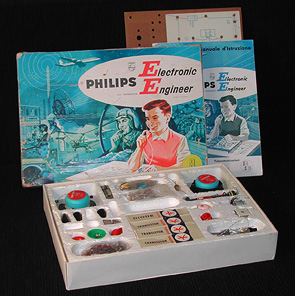 Click a photo to enlarge |
|
|
|
So -- he pushed at me a volume of "The young Radio Amateur" that had a suitable construction
article, gave me the two required pentode tubes, and set me on my way to an amateur radio license, a wonderful
hobby, and a career in Engineering.
My friend went on
to become a top notch experimental physicist, and continues to build amazing stuff to this day. That first receiver I built had a plywood panel, a hand-drawn dial, and a primitive regenerative circuit. It squealed and it hissed and it crackled, and turned out to be of no use to the ESR project -- but it was much fun as a shortwave set. |
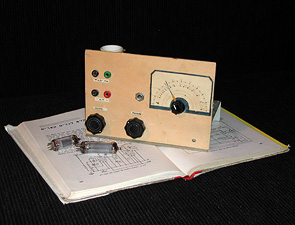
|
|
|
|
I became a shortwave listener (4Z41055), sending reception reports to various stations in far
away lands and collecting their confirmation cards ("QSL" in ham radio parlance); and soon afterward passed the
exam for a ham radio license (call sign 4Z4GE), saved up to buy a communications receiver, built a shortwave transmitter,
and remained active on the air waves for years. The card at the right was my "QSL" card as a listener; the design, as you can see, was homemade as well. |
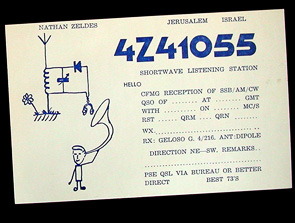
|
|
|
|
The Radio hobby could mean different things to different people; for me it was always primarily
about "Homebrewing": designing and building receivers, transmitters, test gear and odder devices. I actually
became rather good at it, if I say so myself -- by the time I was a university student I had the confidence to tackle
a Single Sideband transmitter (take my word for it, that was no mean feat). The challenge had always
been to build at home gear you'd normally buy commercially (if you had the funds, which I certainly didnít as a kid),
and have the results be as professional-looking (and functional) as the real thing. There was a tremendous satisfaction
when that end was achieved despite the inadequate means at hand. Take the oscilloscope shown below: You may detect that the carrying handle comes from a briefcase, but could you tell that the screen bezel started its life as the rim of the pink plastic lid of a cookie jar? Or that the panel handles on the SSB transmitter were sawn and shaped from the metal rods of an old TV antenna, while the dial assembly was painstakingly created from an assortment of Plexiglas plates, metal rods, household paint, and the gear mechanism from an old surplus military receiver? |
|
|
|
|
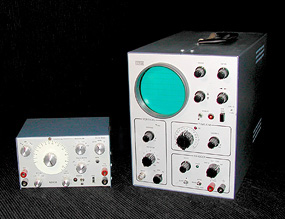
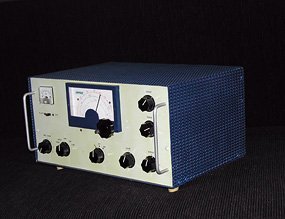 Click a photo to enlarge Homebrew Oscilloscope, Function generator, and Single Sideband (SSB) transmitter |
|
|
|
|
Of course, the improvisation didn't stop at the mechanical parts; the circuitry inside was just
as unusual. Circuits had to be designed to use the available components, many of them recycled from much older
equipment. You see, Israel in those days lacked the plentiful parts supply available to amateurs in America, with
its mail order catalogs and Radio Shack stores. What parts stores we had were few, poorly stocked and not very
impressed with the nerdy kid saving his allowance to buy a few precious components (I remember going to a store
and asking for a specific transistor type, say 2N3456B, "but make sure itís the B variant" -- and the store owner
says indifferently "We had one [type of] transistor, but we ran out"). So, if the saying goes that "Engineering is
the art of making what you want from things you can get", I was forced to make the things I wanted from
practically nothing. This involved much dogged perseverance, and a knack for incessant improvisation born of
necessity. I remember the day I first saw an article about the new Op Amp integrated circuits that had just been invented. My first thought on seeing the schematic diagram was "hey, this is not that complicated Ė I can build one from discrete transistors!" As it happened, one of my classmates had just gotten his hands on a pack of surplus, unmarked transistors... |
|
|
|
|
And then there was the military surplus store, the "Junk", with all sorts of wonderful WWII leftovers;
and the old radios my various relatives threw out occasionally, which I took apart diligently in a hunt for reusable
components. Reuse was much more of an option then, because unlike today, everything was built from discrete components
-- therefore, for instance, parts from a defunct military receiver could be used to build a ham transmitter, and
were. Even the metal case of that particular receiver was useful -- it was so huge, I painted it to hide the drab
gray color, added a cushion, and turned it into an excellent chair
for my den... And there was the creation of tools -- the ultimate trait distinguishing us from the animal kingdom (OK, OK, so that chimp used a twig to get at some ants... but I built an Oscilloscope!) In addition to making my own test equipment, I built a sheet metal bending machine (bending my own enclosures was the toughest area in striving for a professional look), printed circuit etching gear, and an optical bench for optoelectronic projects; all from odd bits and pieces of metal, wood and plastic scavenged all over the place. At one point, I even had a go at discarded automobile oil filters, as a source for the perforated sheet metal needed to ventilate vacuum tube gear... |
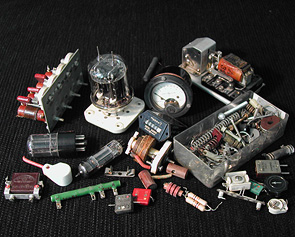 Click a photo to enlarge 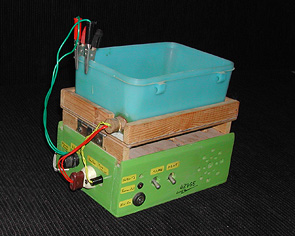 Top: assorted "junk" components; Bottom: a controlled-temperature circuit board etch bath |
|
|
|
Youíre welcome to brand me a Geek -- Iím proud to be one -- but it really was a wonderful hobby for a technically minded teenager. In those days, electronic gear was far less ubiquitous than it is now that we have computer chips in every appliance. A typical home would have a large old radio in the living room, a phonograph hooked up to it, maybe a transistor radio in the kitchen, and later, a TV set; that was all. Understanding how these mysterious devices worked, and how to fix them, was powerful knowledge; building new stuff that actually worked was outright exhilarating. The excitement lasted me well through my twenties, until home computers appeared on the scene and programming them took over as my primary hobby. Of course, the skill to improvise and create neat things in unexpected ways remained; it has been -- and still is -- a big asset in my professional career... | |
|
|
|
|
|
|
|
|
Home | HOC | Fractals | Miscellany | About | Contact Copyright © 2005 N. Zeldes. All rights reserved. |
|